Sleep can change dramatically when the mouth stays gently closed and the nose does the work it was designed to do. That simple shift is the promise behind MyoTape, a soft adhesive tape worn at night to support nasal breathing. Used well, it can quieten snoring, reduce dry mouth, and help many people wake clearer and calmer.
Care is needed, of course. Any tool that influences breathing deserves respect. This guide brings together practical technique, safety pointers, and simple habits that help you get the best out of MyoTape.
Why nasal breathing shapes better nights
Breathing through the nose warms, humidifies, and filters incoming air. That nurtures the airway rather than irritating it. The nasal passages also release small amounts of nitric oxide, a gas that supports blood flow in the lungs and may improve oxygen uptake. The nose also offers gentle resistance that balances carbon dioxide levels, which can stabilise breathing rhythm during sleep.
Mouth breathing tends to dry the tongue and throat. That dryness can trigger micro arousals and encourage snoring, since the soft tissues at the back of the mouth collapse more easily when airflow is turbulent. Many people who wake with a parched mouth or sore throat find the discomfort fades when they stay nasal.
There is also a nervous system angle. Slow, quiet nasal breathing is often associated with a calmer heart rate pattern and steadier heart rate variability during sleep. Fewer swings mean fewer disruptions. The result can be fewer awakenings and more time in restorative stages.
What MyoTape is and how it works
MyoTape is a hypoallergenic adhesive designed to sit around the lips, not across them. The centre of the lips remains uncovered, which means you can part your lips if needed and still pull the tape off quickly. This design helps reduce the sense of being sealed or trapped.
A few characteristics set it apart from ordinary tape:
- Skin friendly glue that releases cleanly
- Elastic fabric that encourages a gentle lip seal rather than forcing one
- An open mouth zone for safety and comfort
- Versions sized for adults and for children, with clear instructions for supervision
Some people do fine with generic skin tape, though many prefer the feel and predictability of a product created for the task. If you have sensitive skin, the dedicated approach often pays off.
Who should use it with caution
MyoTape is not a fix for every sleep problem. Some situations call for medical assessment first.
Avoid mouth taping unless cleared by a clinician if you have:
- Diagnosed obstructive sleep apnoea that is untreated
- Night-time breathing pauses witnessed by others
- Significant nasal blockage, chronic sinus issues, or severe septal deviation
- A current respiratory infection, vomiting, or nausea
- Severe anxiety, panic with facial coverings, or claustrophobia
- Heavy alcohol or sedative use near bedtime
- Open wounds or skin conditions around the mouth
- An allergy to adhesives
Children should only use MyoTape under adult supervision and with advice from a healthcare professional or an orofacial myofunctional therapist. If you use CPAP, speak to your sleep clinic team before adding mouth taping. Some CPAP users do combine MyoTape with nasal masks to reduce air leak, but that needs individual guidance.
If you snore loudly, wake choking, or feel very sleepy in the day, arrange a sleep study. Mouth taping should not be used as a substitute for diagnosis.
Prepare the ground before your first night
A little preparation makes the first trials more comfortable.
- Check nasal airflow. Gently breathe through each nostril with the other one covered. If one side feels blocked, try a warm shower, a saline rinse, or your prescribed nasal spray earlier in the evening.
- Keep the room humidity near 40 to 50 percent. A simple humidifier can help during winter heating.
- Avoid heavy meals and alcohol late at night. Both can worsen reflux and snoring.
- Tidy facial hair where the tape will sit. Even a small trim around the corners of the mouth helps adhesion.
- Patch test the adhesive during the day on the inner forearm for 20 minutes to rule out reactions.
People with hay fever or chronic rhinitis do best when their allergy plan is in good order. Addressing nasal health first makes mouth taping feel natural rather than forced.
A step by step method that builds confidence
Moving gradually is more comfortable than going all in on the first night.
- Daytime familiarisation
- While reading or working at a desk, place MyoTape for 10 to 15 minutes and breathe through your nose.
- Practise removing it with a slow peel using a fingertip. Repeat a few times to remove the novelty effect.
- Short evening sessions
- Use it for the first 30 to 60 minutes of your wind down routine while you listen to something calming or write your to-do list for the next day.
- If your nose feels blocked, pause and address the cause rather than pushing through.
- First night trial
- Apply to clean, dry skin. Avoid lip balms or creams just before taping since they reduce adhesion.
- Centre the opening over your lips, then press lightly around the edges. The tape should feel present but not tight.
- Keep a small tab folded on one edge so you can peel it off quickly if needed.
- Ramp up
- Start with the first half of the night only. Remove the tape at your first bathroom trip.
- If that goes well for two to three nights, try a full night. Aim for three to seven nights in a row before judging the effect.
If you wake and want it off, peel and go back to sleep. Confidence grows from a few uneventful nights.
Techniques that boost the effect
MyoTape works best when the rest of your night-time routine supports nasal breathing and a steady airway tone.
Helpful add ons include:
- Gentle nasal rinse in the evening for clear airflow
- A soft cervical collar or positional pillow if you snore mostly on your back
- Light myofunctional exercises for tongue posture
- A humidifier to keep the throat comfortable
- A lower caffeine cut-off time, ideally before early afternoon
- Reducing late evening alcohol which relaxes throat muscles
The table below highlights supportive practices, why they help, and how to begin.
| Practice | Why it helps | How to start |
|---|---|---|
| Tongue posture training | A tongue resting against the palate widens the airway space behind it | Place the tip of your tongue on the spot behind your front teeth, then press the whole tongue gently to the roof of the mouth, hold for 5 to 10 seconds, repeat through the day |
| Buteyko style breath holds | Builds comfort with nasal breathing and can reduce over-breathing | After a normal exhale, hold the breath until you feel a light urge, then resume nose breathing, repeat 4 to 6 times, stop if dizzy |
| Simple nasal dilator | Keeps the nasal valve open and reduces resistance | Use a soft internal or external dilator on nights when congestion looms |
| Positional therapy | Reduces snoring that worsens on the back | Try a side-sleeping pillow or a light backpack insert to discourage rolling onto your back |
| Evening saline rinse | Clears allergens and dries secretions less | Use isotonic saline, one gentle rinse per nostril before bed |
| Light neck and jaw mobility drills | Relieves tension that can pull the jaw open | Slow neck rotations and gentle jaw open close cycles, five each, during wind down |
Most people only need one or two of these. Pick the smallest change that removes the biggest obstacle.
Troubleshooting common snags
Even with good technique, a few hiccups are common in the first week.
- Skin irritation
- Use a patch test first. Clean the skin with water only, then dry fully. Avoid sticking over stubble. Try a different MyoTape size or a sensitive skin version if available. Use a fine layer of barrier cream in the afternoon, not bedtime, so the skin is protected without stopping adhesion.
- Anxiety or a trapped feeling
- Practise during the day with the central lips open and a finger resting on the peel tab. Pair the practice with slow nasal exhales that last longer than inhales.
- Nasal congestion mid sleep
- Keep a spray saline on the bedside table. Sit up, remove the tape, clear your nose, and decide whether to reapply for the rest of the night. Over time the need often drops.
- Tape falls off
- Clean and dry the skin thoroughly. Avoid oils, balms, or makeup. Press the edges for five seconds after placing. Consider trimming facial hair where the tape sits.
- Dry mouth on waking
- Raise bedroom humidity, review mouth leaks with a snore app or partner, and consider a chin strap on top of MyoTape for a week as a training bridge. If the mouth is still dry, review nasal patency and hydration.
- Beards and moustaches
- A small cleared zone at the corners of the mouth usually solves adhesion. If not, trial an internal mouth guard style lip shield designed for nasal breathing, then retry MyoTape later.
Tracking progress with meaningful signals
Subjective improvements are valuable, though numbers help you decide if the habit is worth keeping. Consumer devices are not medical tools, yet the trends can be useful when viewed over a few weeks.
Look for:
- Fewer awakenings and shorter time awake after sleep onset
- Less snoring reported by a bed partner or by a snoring app
- A lower respiratory rate during sleep by one to two breaths per minute, if previously elevated
- Improved morning mouth feel, fewer trips for water at night
- Calmer heart rate patterns and a slightly higher average HRV for your baseline
- A steadier mood and more even energy by late afternoon
Keep a simple log. Three columns often suffice: what you changed, what you noticed, and any numbers your tracker gives you. Review after two weeks, then again after a month.
What research currently shows
Scientific work on mouth taping is still early. Small pilot studies suggest it can reduce snoring time and may lower respiratory disturbance in selected people with mild obstructive sleep apnoea who breathe through the mouth at night. Sample sizes have been modest and methods vary, so strong claims would be premature.
There is broader evidence for the benefits of nasal breathing. Studies of nasal obstruction show that clearing the nose can reduce snoring and improve sleep quality. Work on breathing retraining indicates that calmer, slower nasal breathing can stabilise carbon dioxide levels and reduce arousal. These strands support the logic behind MyoTape, yet they do not replace proper screening for sleep apnoea or other disorders.
If symptoms point to a sleep disorder, seek a formal assessment. MyoTape can be one piece of the picture, not the whole picture.
Care, hygiene, and lifespan of the habit
A little care keeps the skin happy and the routine sustainable.
- Clean the skin with water only, pat dry, and wait a minute before applying
- Remove slowly by supporting the skin with one finger and peeling with the other
- Rinse the area after removal and apply a bland moisturiser in the morning if dry
- Rotate the exact placement a few millimetres from night to night
- Store MyoTape in a cool, dry place, sealed to protect the adhesive
Most people find they no longer think about the tape after a week. The habit becomes automatic, which is exactly the point.
Frequently asked questions
- Is mouth taping safe
- For healthy adults with clear nasal airflow, daytime rehearsals and careful application make it low risk. People with diagnosed or suspected sleep apnoea, significant nasal disease, or panic with facial coverings should speak to a clinician first.
- Can I use it with CPAP
- Many nasal mask users tape to reduce mouth leak. Involve your sleep clinic so pressure, mask fit, and leak data can be reviewed.
- What if I get a cold
- Pause until the nose is clear again. Resume with short trials and extra nasal care.
- Will it fix snoring
- It often reduces snoring that stems from mouth breathing. If snoring continues or is loud and frequent, arrange a sleep assessment to rule out apnoea.
- Does it help with dry mouth and dental issues
- Keeping the mouth closed reduces dryness, which dentists often welcome. Saliva protects enamel and gums. Your dentist can advise if mouth breathing has affected your oral health.
- How long before I notice changes
- Many notice differences in a week. Track two to four weeks for a fair trial.
- Can I tape during naps
- Naps are a good way to practise if they do not cause anxiety. Keep them short and earlier in the day so night-time sleep is not disrupted.
A simple evening routine that brings it all together
Here is a compact template you can personalise.
- Two hours before bed, finish your last meal and any alcohol
- One hour before, a brief nasal rinse and a warm shower
- Ten minutes of quiet reading or stretching with slow nasal breathing
- Apply MyoTape to clean, dry skin with a small peel tab
- Side sleeping setup ready, phone on do not disturb, room cool and dim
- If you wake, decide quickly whether to remove or keep, then settle back
Consistency quietly reshapes your nights. You do not need to chase perfection. One small, repeatable routine usually beats sporadic bursts of effort.
When to seek extra help
If you feel worse, not better, stop and review. Book a visit if you have:
- Loud, persistent snoring
- Witnessed breathing pauses
- Morning headaches, brain fog, or high blood pressure
- Restless legs or frequent awakenings
- Asthma that flares at night
Specialists in sleep medicine, ENT, dentistry, and myofunctional therapy can work together on airway, jaw, and tongue factors. A joined up plan tends to produce the most durable gains.
Breathing through the nose is a quiet skill that many adults have lost. With patient practice, MyoTape can guide you back to that natural pattern and allow your nights to do what nights are meant to do. Start gently, listen to your body, and build from there.











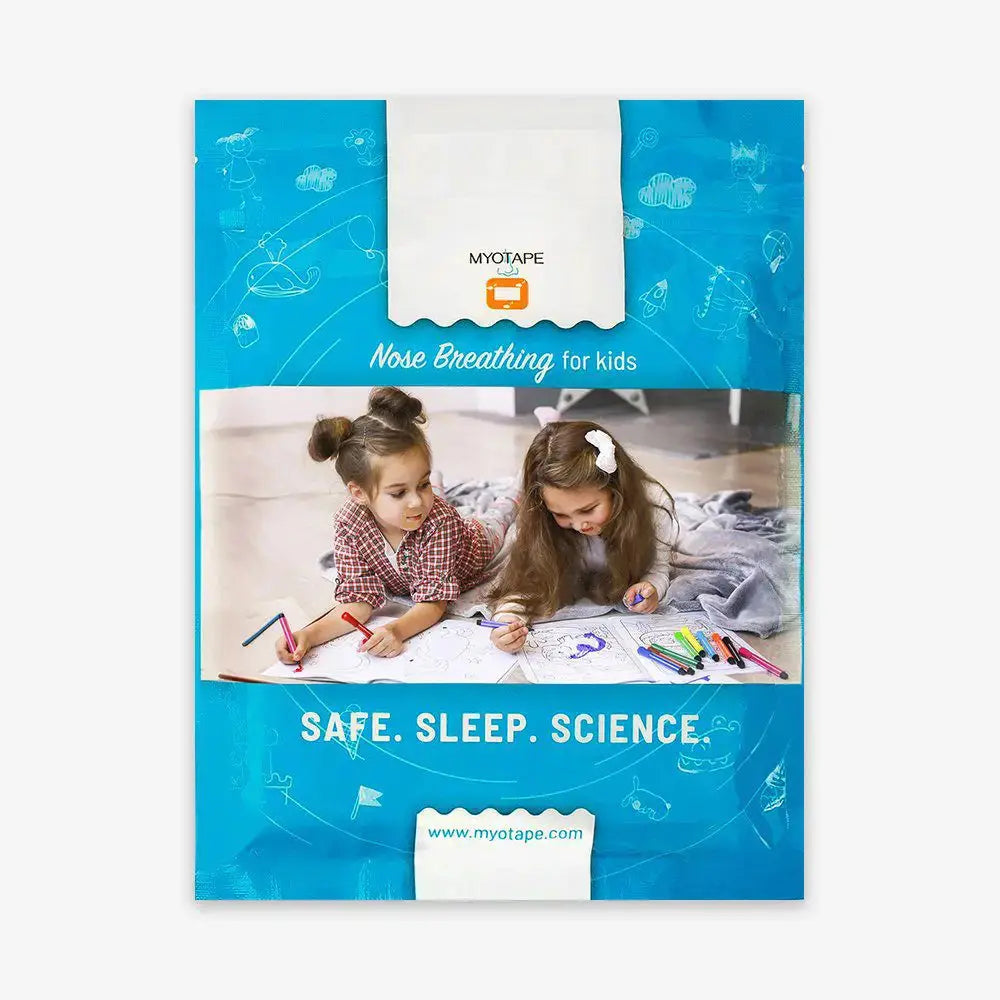
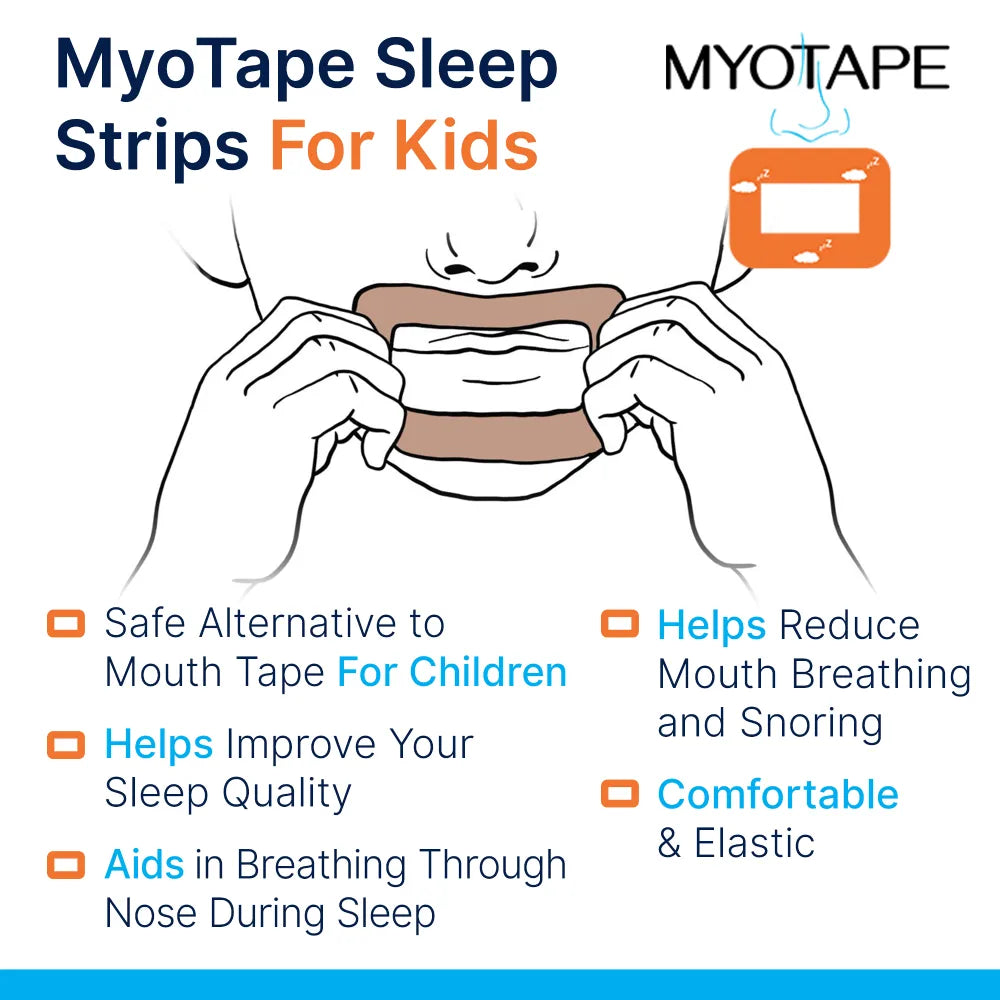
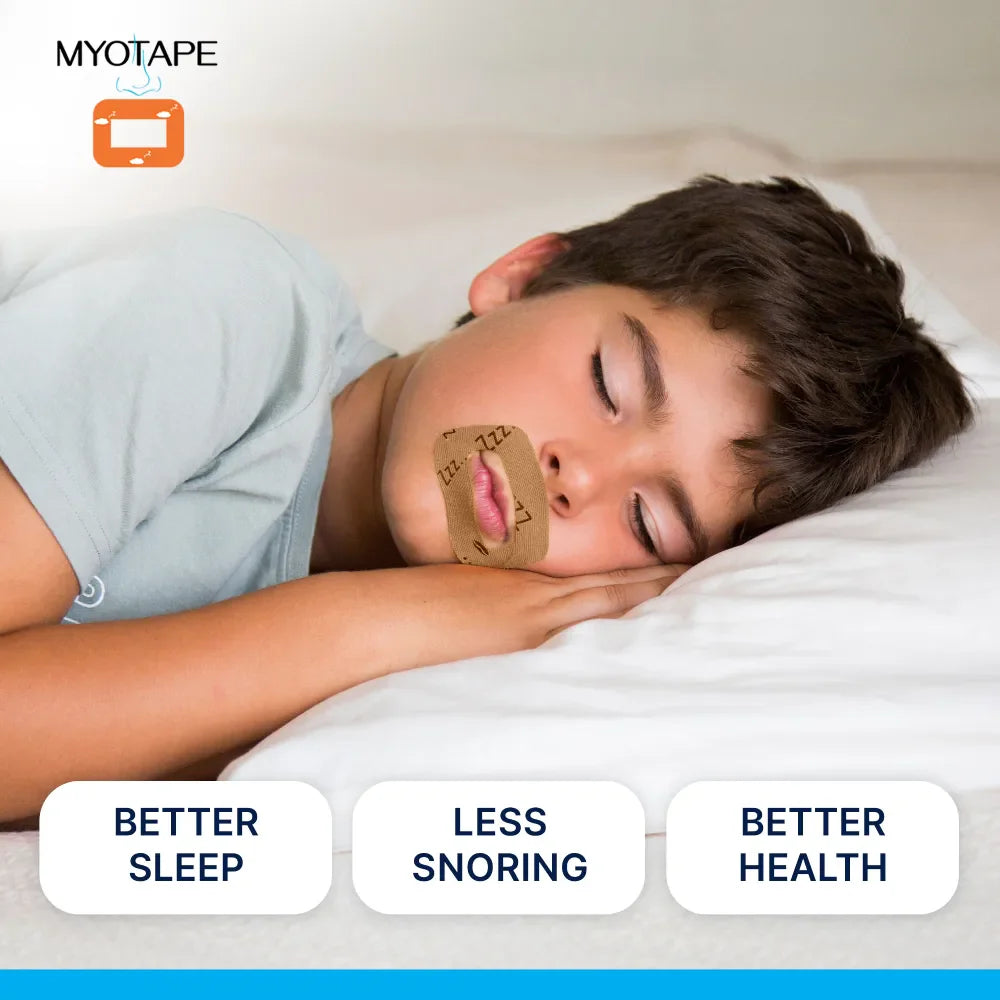
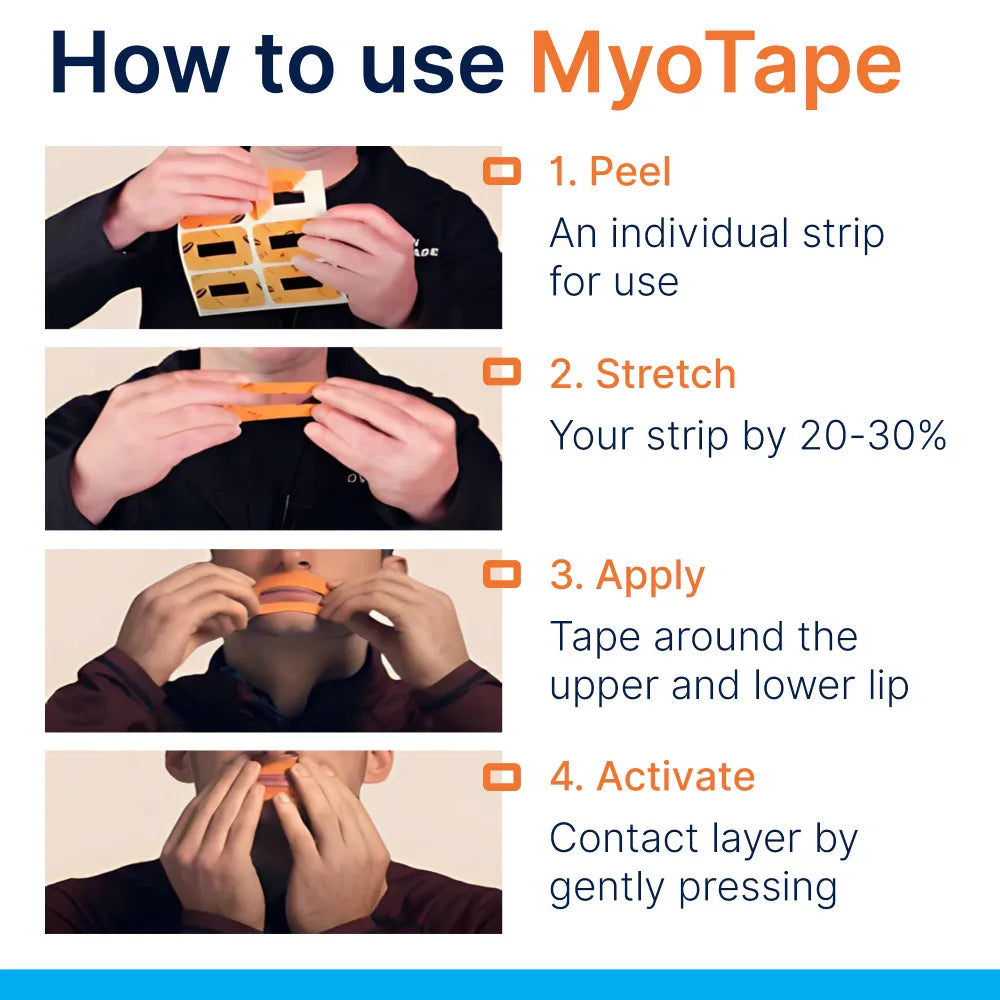
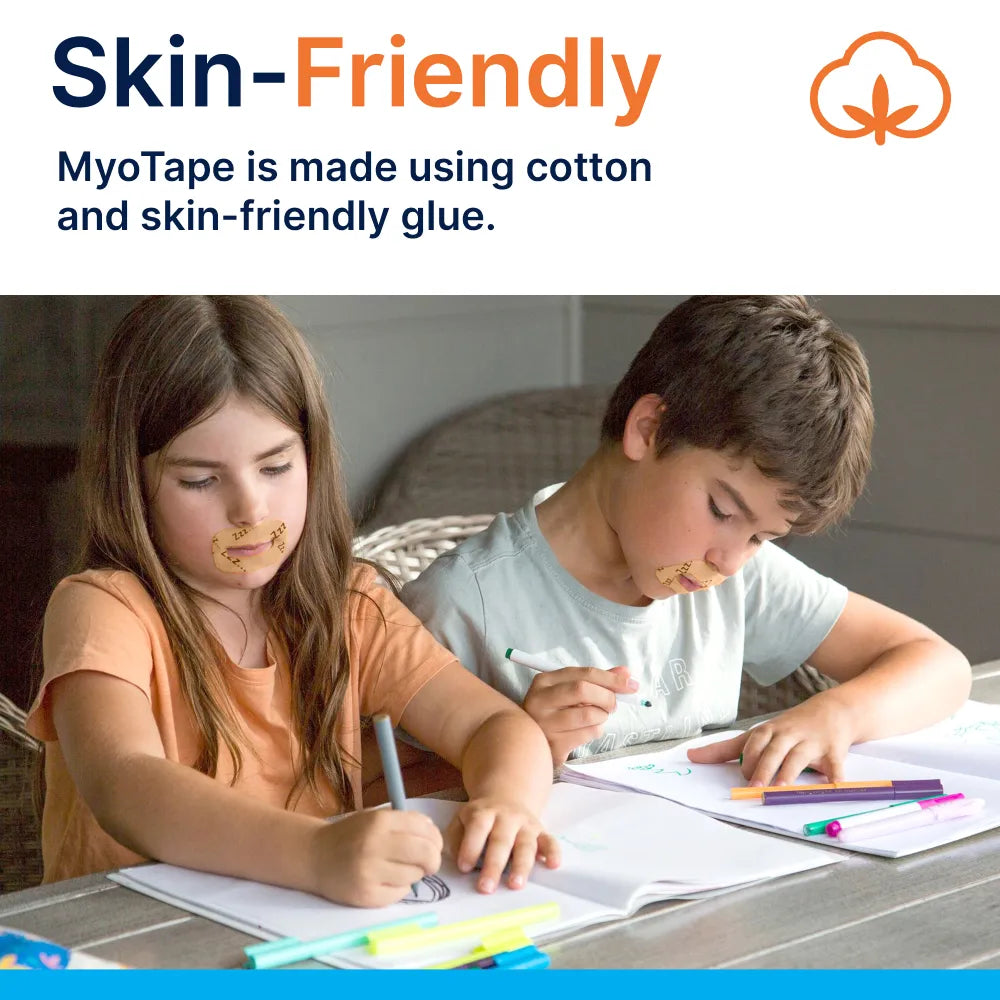










0 comments